Alice Springs Desert Park
ASDP Home | Fauna | Flora | Nature Theatre | Nocturnal House
Sturt’s Desert Pea (Swainsona formosa) is named after explorer Captain Charles Sturt, who noted the occurrence of in 1844 while exploring between Adelaide and Central Australia.
It is a perennial plant with an almost silky grey-green pinnate foliage which grows prostrate spreading across the ground, and has erect flower clusters.
There are two recognised forms – the Inland Form with a black boss, and the Northern Form, with a pale red boss. Other naturally occurring hybridisation within the species have given rise to plants with a pure white, pale pink, apricot and bicolours flower, with or without the black boss. Check out the flora images of the white Sturt’s Desert Pea.
Sturt’s Desert Pea can be found growing naturally in all mainland states except Victoria and the southern part of the Northern Territory. It is found growing in red-brown sandy or loamy soils on open plains, mulga shrubland and the desert regions of Central Australia. It is mainly found in areas where there is no livestock grazing as the plant is eaten by cattle.
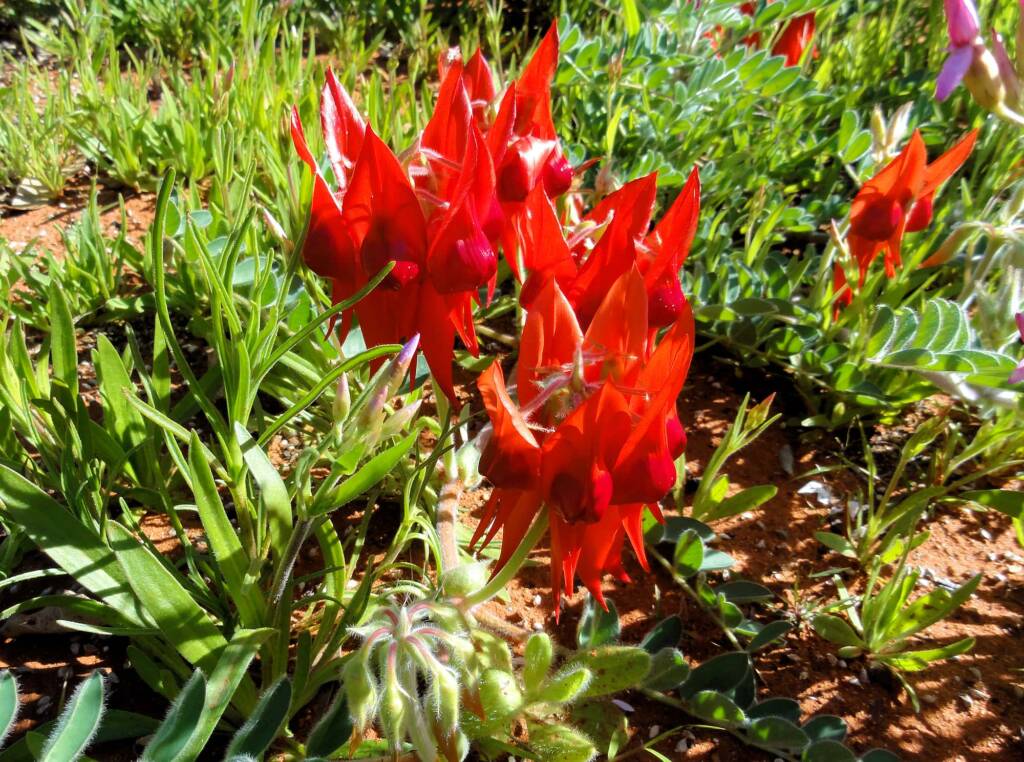
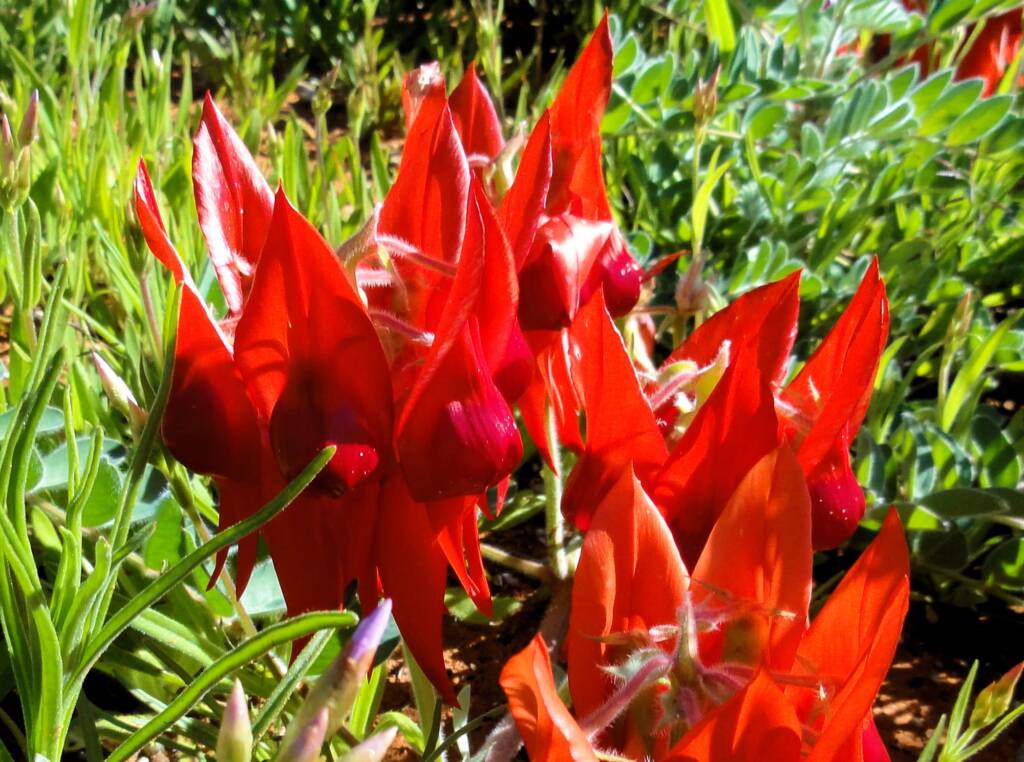
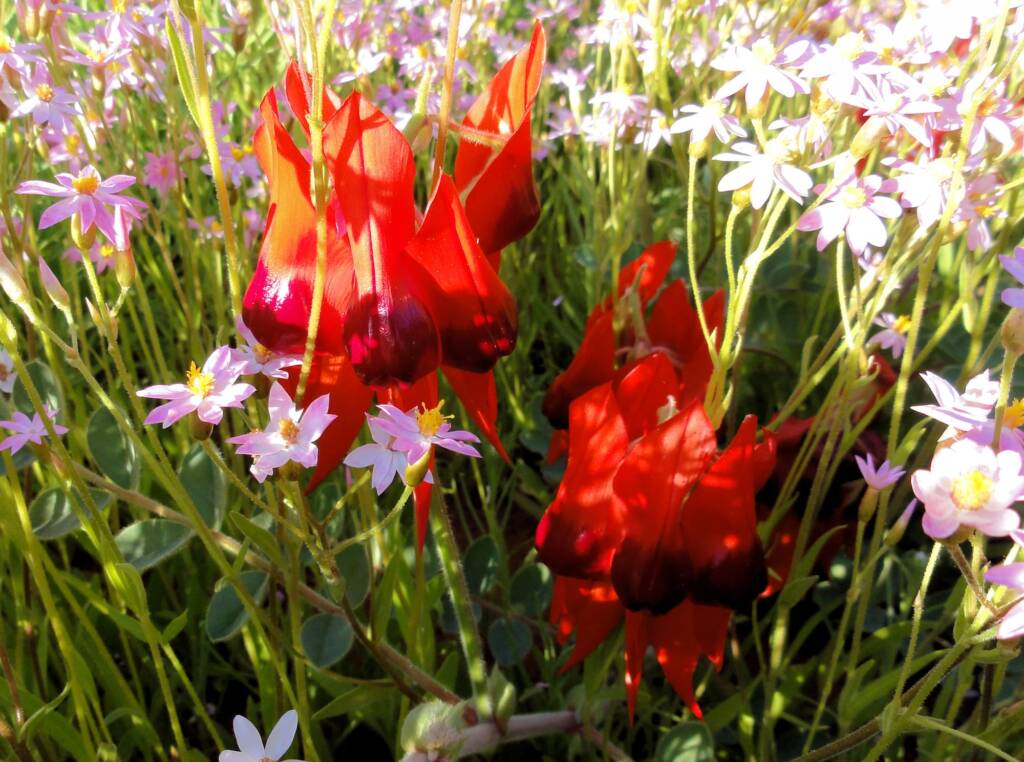
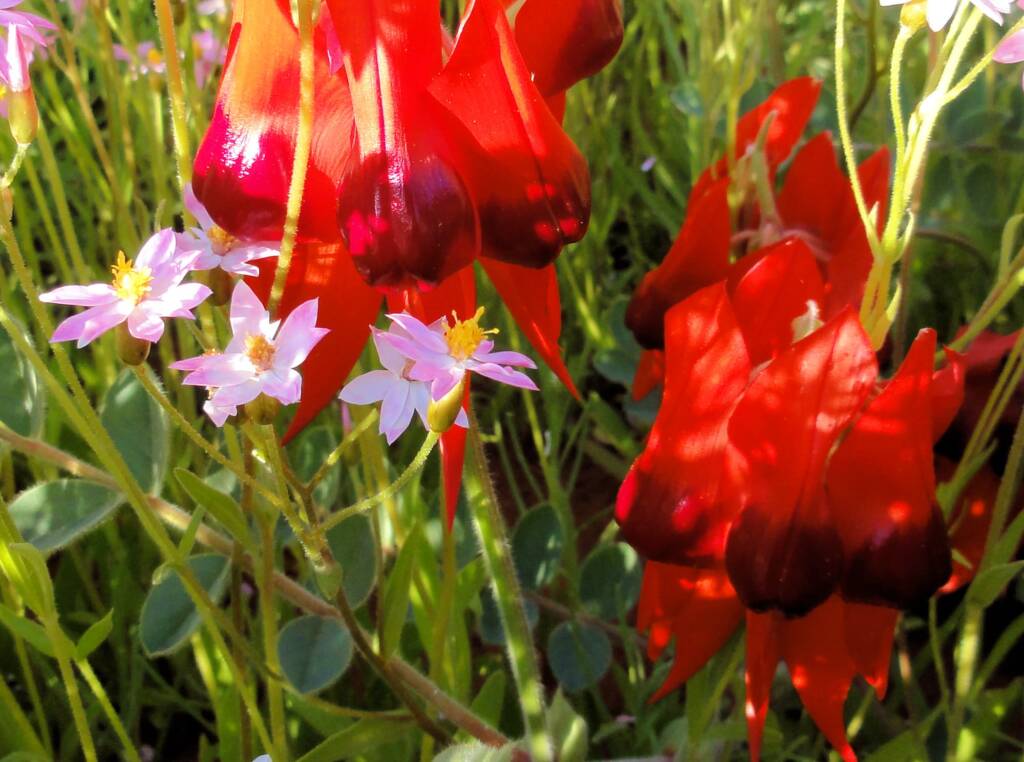
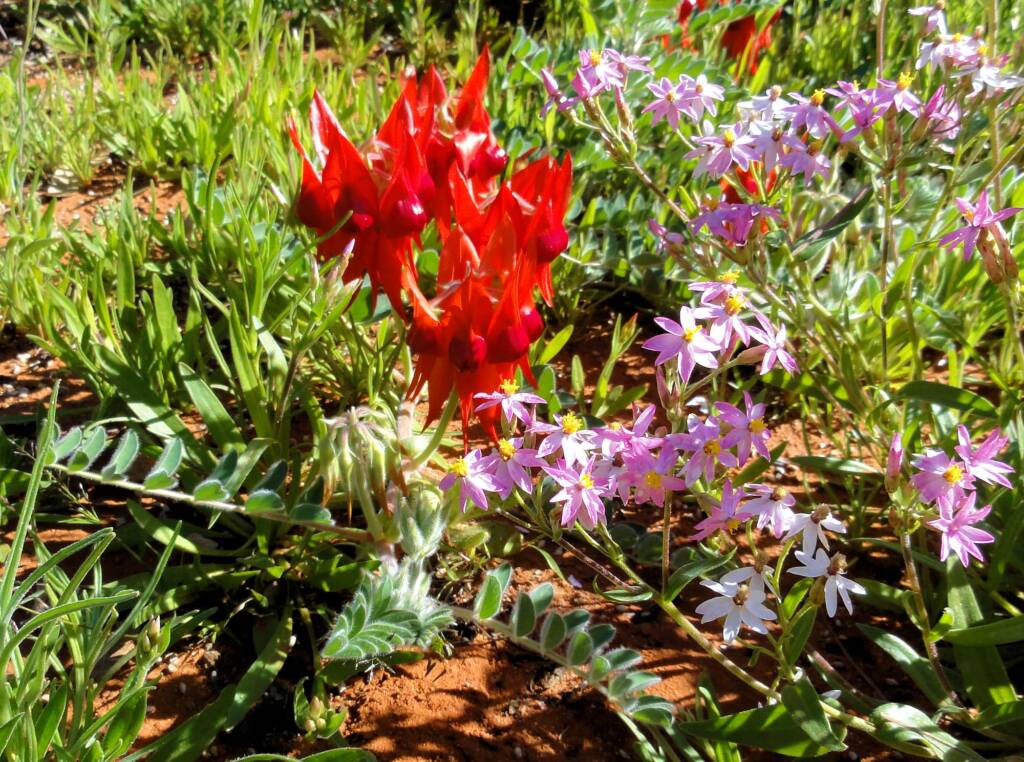
- Scientific Classification
- Kingdom: Plantae
- Division: Magnoliophyta
- Class: Magnoliopsida
- Order: Fabales
- Family: Fabaceae
- Subfamily: Faboideae
- Tribe: Galegeae
- Genus: Swainsona
- Species: S. formosa
- Binomial name: Swainsona formosa
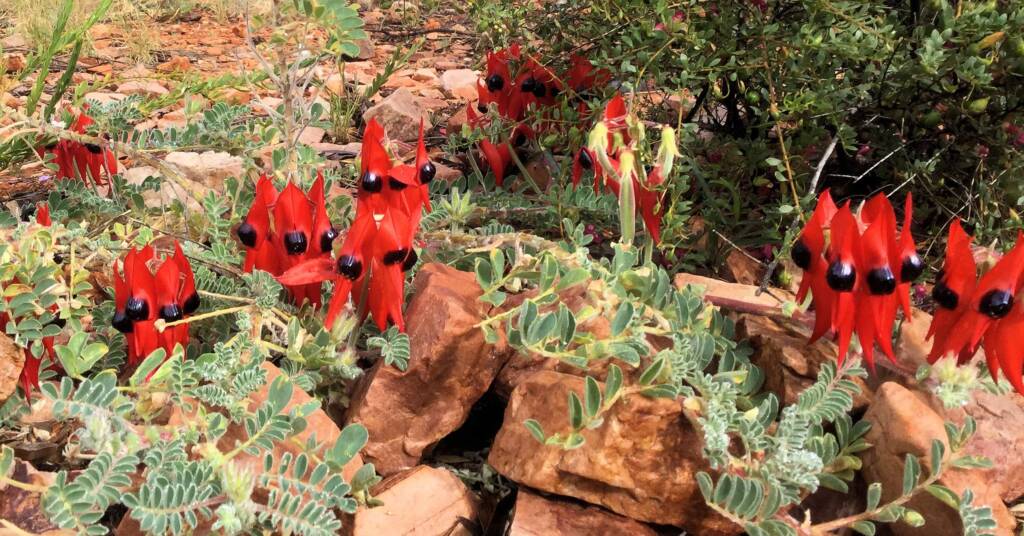
ASDP Quick Link: Home | Fauna | Flora | Nature Theatre | Nocturnal House
ASDP FloraBatswing Coral Tree Blue Mallee Bush Banana Buttercup Pigweed Dead Finish Desert Grevillea Desert Oak Desert Raisin Field Lily Georges Indigo Golden Everlasting Honey Grevillea Kangaroo Grass Lamarchea sulcata Native Apricot Native Bluebell Native Cotton Bush Native Tomato Olearia ferresii Nicotiana megalosiphon subsp sessilifolia Parrot Pea Pink Everlasting Poached Egg Daisy Potato Vine Quandong Rattlepod Grevillea Red-bud Mallee Red Mulga Resurrection Fern Rough Halgania Sandover Lily Silkyheads Spearwood Bush Sturt’s Desert Pea Waddy-wood Walukara Weeping Spinifex White Spider Flower Wild Passionfruit Wildflower Display
